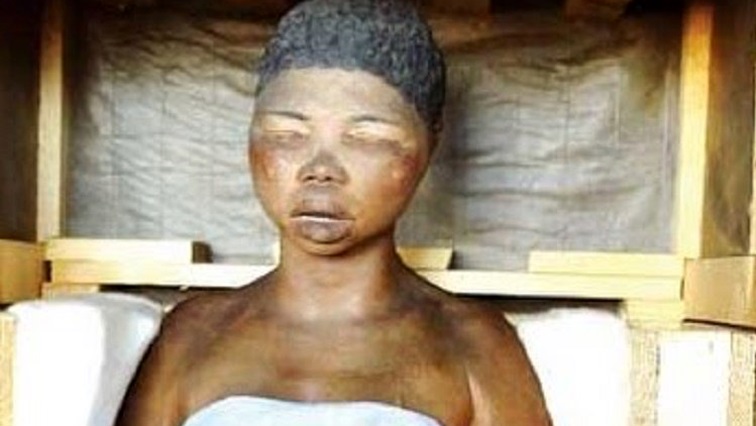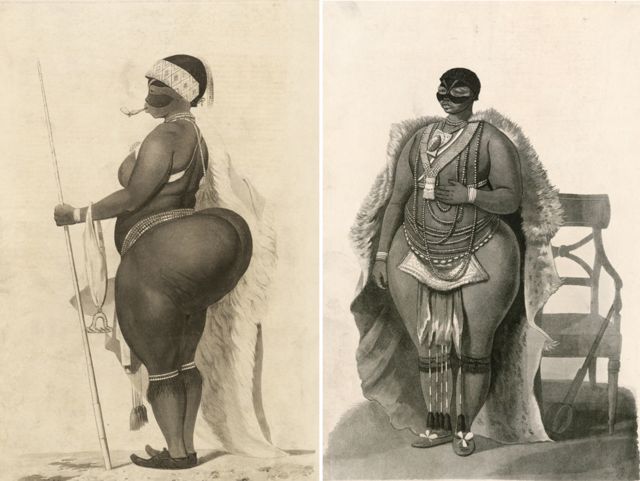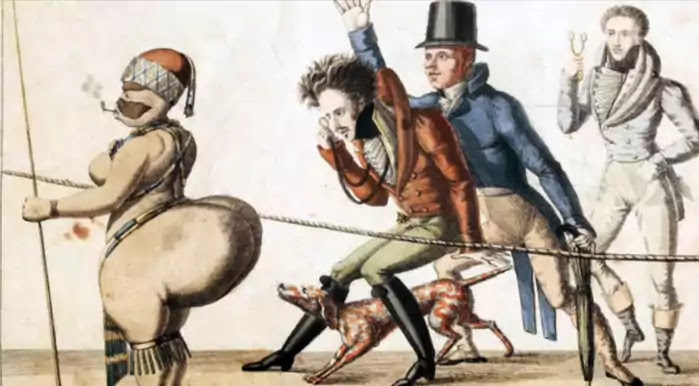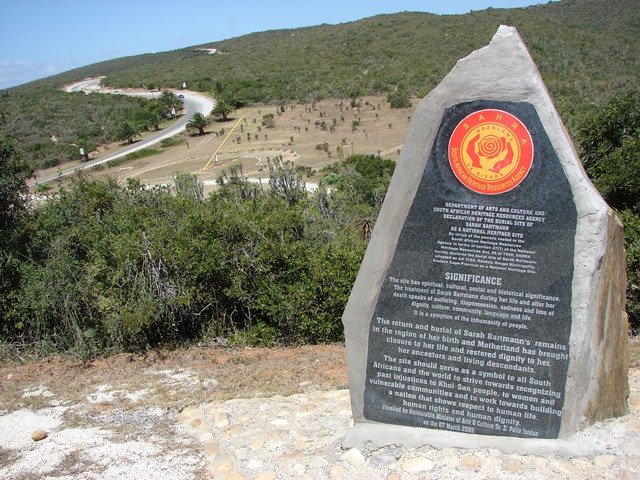Sarah Baartman lived a fascinating but tragic life. She was taken from her home in South Africa and exhibited as a sideshow attraction in Europe. From her humble beginnings in South Africa to her exploitation and objectification in Europe, Baartman’s story is one of struggle, resilience, and ultimately, legacy.
Her unique physical features made her an object of curiosity and fetishization. Despite her difficult circumstances, her legacy continues to inspire us today and reminds us of the injustices of the past.
Get ready to be intrigued by the remarkable life of Sarah Baartman.

Why Sarah Baartman’s Life Is Noteworthy
Looking into Sarah (Saartje) Baartman’s life and legacy is important for many reasons. Firstly, it sheds light on the exploitation and dehumanization of black people during the colonial era.
Baartman’s exhibition as the “Hottentot Venus” is a stark reminder of the ways in which black women’s bodies were fetishized and objectified for the entertainment of white audiences. By examining Baartman’s life, we can gain a deeper understanding of the historical roots of racial and gendered violence and oppression.
In addition, Baartman’s life helps to understand the ongoing struggles for equality and human dignity. Her legacy continues to inspire contemporary movements for social justice. This is because her life is a symbol of the fight against racism and sexism.
Finally, Baartman’s life helps us acknowledge the contributions and experiences of marginalized groups. Her life is a testament to the resilience and strength of black women. And her legacy has inspired generations of activists and scholars.
Her life and legacy can inspire us to give voice to those whose stories have been silenced by dominant narratives. Only then can we work towards a more inclusive and just society.
Sarah Baartman – A Ragged Introduction to Life
Sarah Baartman was born in 1789 in the Gamtoos River Valley in the present-day Eastern Cape province of South Africa. She was a member of the Khoikhoi people, also known as the Hottentots. They were a pastoralist society that had lived in the region for thousands of years. However, by the time Baartman was born, the Khoikhoi were facing the devastating effects of colonialism.
The Dutch arrived in the region in the 17th century. Over time, they had dispossessed the Khoikhoi of their land and subjected them to forced labor and violence. By the time Baartman was a young woman, the Khoikhoi had been decimated by disease, warfare, and displacement. Their way of life was under threat.
Despite these challenges, Baartman grew up in a close-knit community and was known for her musical talents and engaging personality. She was particularly skilled in the art of dance, which would later become a central part of her public exhibition in Europe.
Read: The Impact of European Colonialism on African Societies and Culture
False Promises of a Better Life in Europe
Baartman’s people had a rich cultural heritage, and they developed their forms of music, dance, and storytelling. Baartman’s talent in these areas would have been highly valued within her community.
However, as a young woman, Baartman’s life took a dramatic turn when she was approached by an English doctor and an entrepreneur who was seeking to capitalize on her unique physical features.
Baartman’s body had what was considered at the time to be an unusual shape. She had particularly large buttocks and elongated labia. These features were attributed to her Khoikhoi heritage and were seen by Europeans as exotic.

The doctor and entrepreneur convinced Baartman to travel with them to Europe, promising her wealth and fame in exchange for her exhibition as a sideshow attraction.
Records do not reveal whether she was forced to leave, went willingly, or was sent to Cesars by her family. However, she arrived in Europe, not realizing the full implications of what was to come.
Baartman’s Exhibition in Europe
The exhibition of Sarah Baartman, also known as the “Hottentot Venus,” in Europe was a significant chapter in the history of colonialism, racism, and exploitation. Baartman was brought to Europe in 1810 by an English doctor and an entrepreneur who sought to profit from her unique physical features.
Her body was seen as grotesque by European audiences due to her large buttocks and elongated labia. She was put on display in a cage and paraded around in front of crowds, who paid to see her as a sideshow attraction. Baartman’s exhibition drew large audiences and made her a sensation in Europe. But it also subjected her to dehumanizing treatment and exploitation.
Her inhumane experience was part of a broader trend of exhibiting non-white bodies for the entertainment of white audiences in Europe during the colonial period.
We Design & Develop Websites, Android & iOS Apps
Looking to transform your digital presence? We specialize in creating stunning websites and powerful mobile apps for Android and iOS. Let us bring your vision to life with innovative, tailored solutions!
Get Started TodayBlack bodies were seen as inferior and exotic. So, they were often put on display as curiosities or objects of fascination.
Baartman’s exhibition also demonstrated the prevailing attitudes towards race and gender during the period. Black bodies were often seen as sexually deviant and hypersexualized. Her exhibition was accompanied by a narrative that portrayed her as a primitive and unusual sexual being, reinforcing racist and sexist stereotypes.
Despite the dehumanizing treatment and exploitation that Sarah Baartman faced during her exhibition, she also demonstrated agency and resistance.
She was able to negotiate the terms of her contract with her exhibition managers, and she was known to have refused to perform when she was ill or exhausted. Her resilience and determination in the face of exploitation serve as a powerful reminder of the agency of black women during the colonial period.

Legal Battle for Baartman’s Freedom
Baartman’s exhibition in Europe drew the attention of abolitionists, who were appalled by the degrading treatment she faced.
In 1810, the British Anti-Slavery Society took up Baartman’s case and launched a legal battle to secure her freedom. The African Association, a British abolitionist society, organized a newspaper campaign for her release. They organized a protest led by British abolitionist Zachary Macaulay.
Hendrik Cezar, Sarah’s showman and brother to her employer, Peter also mentioned that Baartman had the right to live a free life like others. The Society argued that Baartman was being held against her will and subjected to forced labor and sexual exploitation. They also stated that Baartman was entitled to the same rights and freedoms as any other person, regardless of her race or gender.
The legal battle for Baartman’s freedom was complicated. It involved navigating the complex legal systems of both Britain and France. This was because she was exhibited in both countries, and her exhibition managers used legal loopholes and bribery to avoid releasing her. The Society also faced opposition from powerful politicians and businessmen who were invested in the exhibition.
She later toured other parts of England and was featured at an 1812 fair in Limerick, Ireland. Baartman was also shown at a fair in Bury St Edmunds, Suffolk. She was baptized in Manchester Cathedral on December 1, 1811, and there is evidence that she married on the same day.
Read: The Trans-Saharan Slave Trade and its Impact on Africa
Sarah Baartman Gained Her Freedom After a Drawn-Out Battle
Despite these challenges, the Society persevered, and in 1815, they were able to secure Baartman’s release from her exhibition managers. She was taken into the custody of the British government, and Society continued to fight for her repatriation to South Africa.
However, their efforts were ultimately unsuccessful. Baartman was transferred to the custody of a French scientist who used her body for further study.
Baartman’s legal battle for freedom was a watershed moment in the history of colonialism and racism. Her case highlighted the systemic injustices faced by black people during the colonial period. It demonstrated the ways in which black bodies were exploited for the benefit of white Europeans.
Death
After years of being exhibited as a sideshow attraction in Europe, Sarah Baartman’s health began to decline. Unfortunately, she died on 29 December 1815.
Baartman’s legacy, however, did not end with her death. Her story captured the attention of abolitionists and activists working to end the transatlantic slave trade and colonial exploitation.
Read: The Transatlantic Slave Trade and Its Impact Today
Her treatment at the hands of her exhibition managers and the legal system that upheld her enslavement became a symbol of the dehumanization and exploitation faced by black people under colonialism.

Baartman’s Legacy
In the years following her death, Baartman’s remains were dissected and her body parts were put on display in various museums throughout Europe. Up until 1974, her brain, skeleton, and reproductive organs were on display in a museum in Paris. For decades, her remains were treated as a scientific curiosity rather than the remains of a human being.
It was not until 2002, nearly 200 years after her death, that Baartman’s remains were finally returned to South Africa and buried in her homeland. The ceremony was attended by thousands of people, including government officials and activists, who came to pay their respects to Baartman and honor her legacy.
Today, Baartman’s story continues to inspire activists and scholars to challenge the legacy of colonialism and fight for social justice. Her legal battle for freedom and her exploitation and dehumanization serves as a powerful reminder of how systemic oppression and exploitation have been used to maintain power and privilege.
Baartman’s legacy also reminds us of the importance of centering the voices and experiences of marginalized people in our efforts to create a more just and equitable society. By acknowledging the humanity and agency of those who have been historically marginalized, we can work to dismantle the systems of oppression that have perpetuated inequality and exploitation for centuries.
We Design & Develop Websites, Android & iOS Apps
Looking to transform your digital presence? We specialize in creating stunning websites and powerful mobile apps for Android and iOS. Let us bring your vision to life with innovative, tailored solutions!
Get Started TodayBefore you go…
Hey, thank you for reading this blog to the end. I hope it was helpful. Let me tell you a little bit about Nicholas Idoko Technologies. We help businesses and companies build an online presence by developing web, mobile, desktop, and blockchain applications.
We also help aspiring software developers and programmers learn the skills they need to have a successful career. Take your first step to becoming a programming boss by joining our Learn To Code academy today!
Put Your Tech Company on the Map!
Get featured on Nicholas Idoko’s Blog for just $200. Showcase your business, boost credibility, and reach a growing audience eager for tech solutions.
Publish Now










